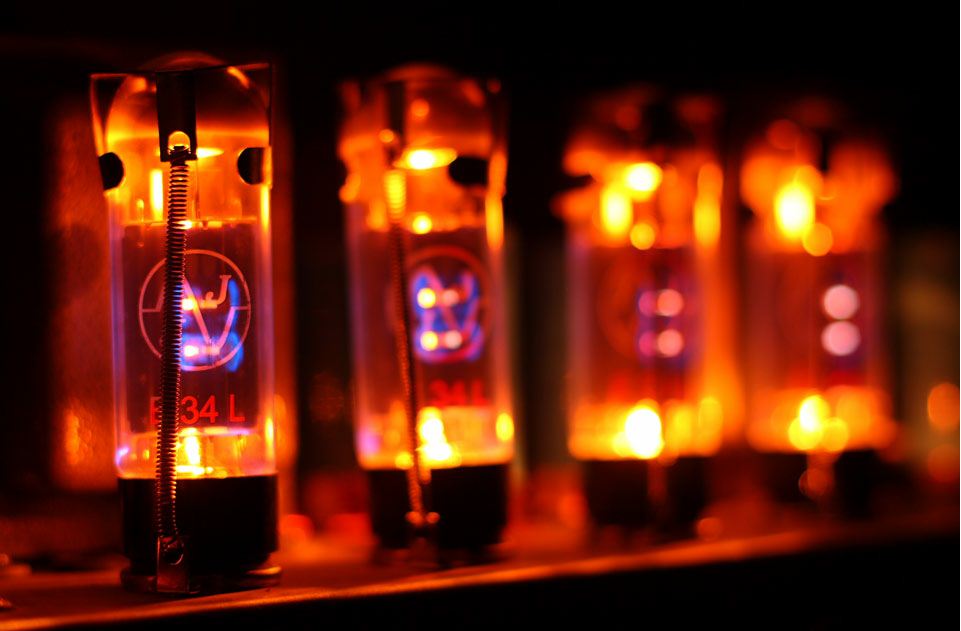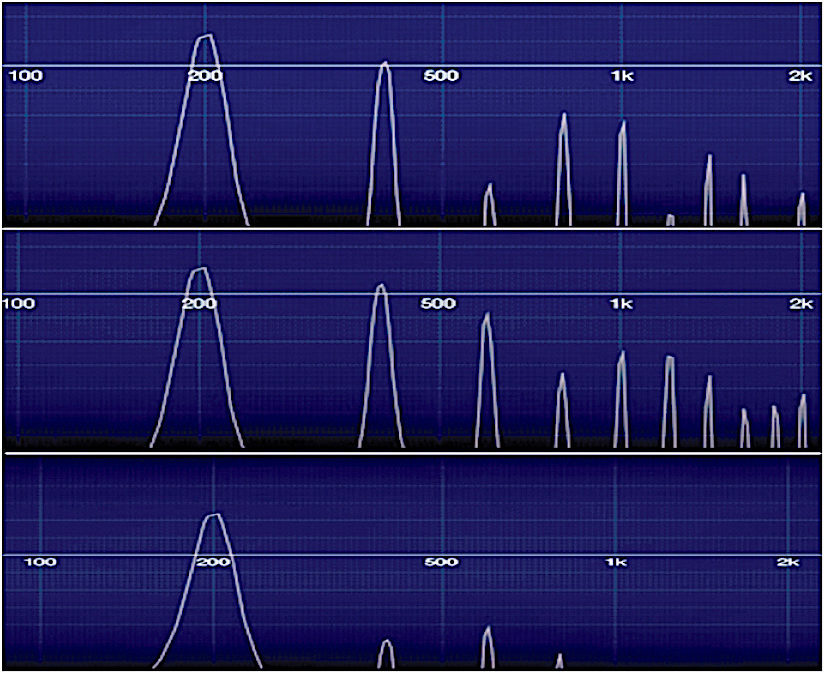One of the most popular materials of our blog on GT was the
post “Session of warm lamp magic with disclosure” . He touched conventional stereotypes when evaluating the UMZCH with semiconductor and tube circuitry. In addition, the discussion of the
post about guitar tube amplification and digital emulation of tube effects was stormy and alive.

Some of my opponents in holivarah on these topics said that I, they say, know little about TLZ, and all the charms of it are not at all in harmonics, but in transformers, operational amplifiers, etc. Opponents opaquely hinted that there is no detailed study of the spectral composition of the distortion for tube and transistor amplifiers.
In those materials I wrote that it was too early to put an end to the question of tube sound, now, I believe, it’s time. More recently, I came across a relatively fresh study of the physicist David Kiportsts, which finally closes the question of the nature and effects of the so-called TLZ (at least on the question of guitar gain).
Psychoacoustics of perception of distortions
As we already wrote, in the studies of Fletcher, Voishvillo and Aldoshina the difference between the subjective perception of different harmonics was revealed. In particular, studies have shown that harmonics of a higher order are perceived as pronounced unpleasant distortion, and low, as more harmonious or at least less noticeable.
It was also noted in the studies that odd harmonics (3rd, 5th, 7th, 15th, etc.) create dissonant tones and therefore are perceived as incoherent or disharmonious. Tones generated by even harmonics, on the contrary, are harmoniously combined with the main sound.
These studies are based on the majority of allegations that the sound of warm (in the literal sense) tube amplifiers is pleasant to the human ear. Semiconductor inferior to them in the harmonic distortion. It is the harmoniousness of the lamps that are successfully used by musicians and sometimes valued by audiophiles.
Moreover, it has been proven that the so-called. “Honesty” (faithfulness of reproduction) is higher for modern “stone” amplifiers, since The level of distortion in them is much lower. In the 70s, lamp technology had advantages, since the harmonic coefficient was approximately equal for transistor and lamp systems. Today, the situation is significantly different, since the majority of lamp products are dozens, and sometimes hundreds of times more distorted by sound, compared to the similarly priced semiconductor UHF.
David Cypriots Point
David Kiportsts, working in the American college Mills, did not invent anything new. But it is this person who will be remembered as a physicist who prepared the lamp "magic" and proved the physical nature of psychoacoustic effects.
In any case, simply describe the appearance of harmonic distortion during sound amplification. Transistors (microcircuits) or vacuum tubes can increase electrical power. In the case of sound, the power amplification process is associated with the appearance of additional signals by other frequencies - i.e. harmonic distortion. For example, when amplifying a 300 Hz signal, 600, 900, 1 200 Hz signals appear, respectively, the second, third and fourth harmonics.
David Kiportsts experienced guitar amplifiers, as he was interested in the love of guitarists. With the so-called he did not work with an audiophile lamp, and judging by his article, he doesn’t really know about it.
The scientist investigated and compared the harmonic distortion in Fender Pro Jr and Bugera BC15 amplifiers. The first is completely tube-based (a preamplifier and a tip are implemented on triodes), the second is built as a hybrid (tube preamplifier and a transistor tip).
The scientist identified a number of patterns that related to these amplifiers.


For example, Fender Pro Jr in the mode of operation without overload was characterized by a low Kg, a significant predominance of even harmonics, low order harmonics were expressed 2nd, 4th. The overload mode led to the amplification of the 5th harmonic compared to the 6th, and the weakening of even harmonics, amid some amplification of the odd ones. Bugera BC15 in both modes showed the severity of odd harmonics, mainly the 3rd and 5th.

Briefly, it is possible to characterize the experimenter’s conclusions as the fact that the realization of amplification on transistors contributes to the appearance of a greater number of disharmonous odd harmonics in the resulting signal.
At the same time, the appearance of high order harmonics, which were referred to by authors of similar publications in the 70s, is not observed. On the contrary, in both tube and transistor amplifiers the order of harmonics is limited to the 6th.
In his study, the physicist gives a psychoacoustic rationale for the harmoniousness of even and indifference of odd harmonics, and also names the reasons for which guitar amplification is valued by guitarists.
So the amplifying signal of electric guitars is already rich in harmonic content. An overloaded lamp path can add additional harmonics to each of the original harmonics to the original harmonics of this signal. In this case, the most pronounced of them will be even, which guarantees the necessary aesthetic musical effect.
Dry residue
The data reflected in the research of Kiports suggests that the well-known effects of tube sound are of an exclusively harmonic nature. The study also suggests that lamp technology is currently most applicable as a guitar enhancement, as well as creating aesthetically valuable musical effects.
At the same time, the classic “lamp” today can be effectively replaced by digital emulations (since there is no problem at present in creating harmonic distortions in digital signal processing). I note that the latter have not yet found a wide concert and rehearsal use, due to the unusual operation (it is easier for many to buy a lamp), but are increasingly used in studio work.
In HI-FI and Hi End, the lamps gradually die, due to the circuitry complexity to achieve high fidelity of playback, as well as the possibility of accurate and inexpensive digital imitation of so-called. tube sound.
In these segments, lamp amplification remains relevant for creating unique and unreasonably expensive authentic circuit masterpieces, designed for a narrow circle of connoisseurs. Also, the lamps are effective in specialized headphone amplification, especially for electrostatic.
JeansOur catalog
presents a wide range of
guitar amplifiers, as well as
tube UMZCH for music playback.